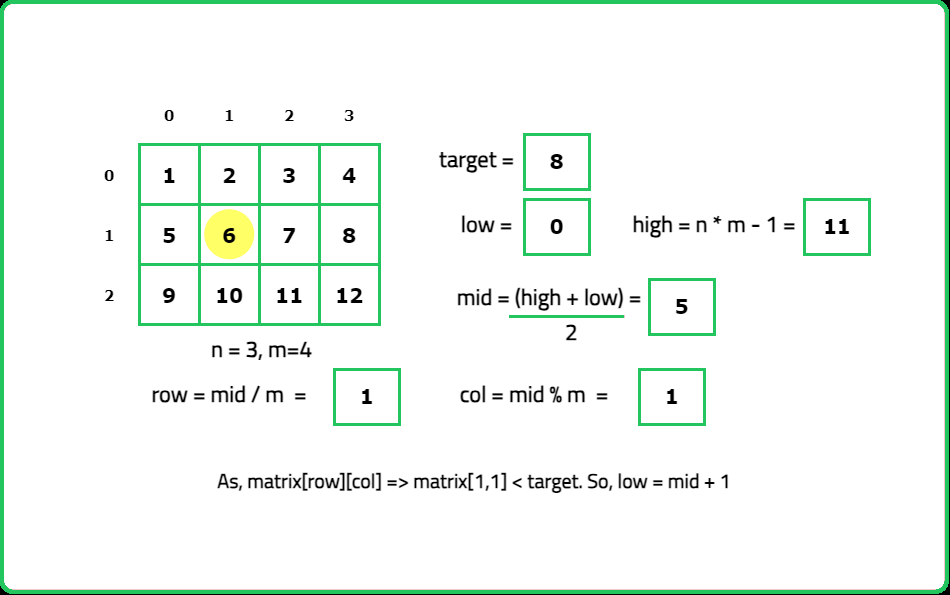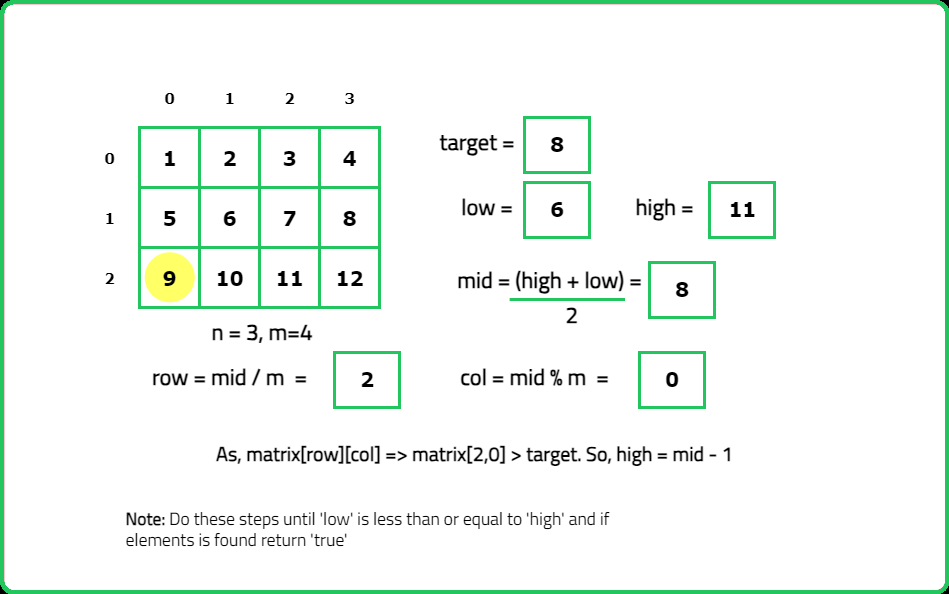Search in a 2D matrix
Binary Search
2D Arrays
Hard
- This problem is essentially a form of sorted matrix search, a concept widely applied in database querying systems and search engines
- When handling large volumes of data arranged in a sorted format (like timestamps/logs), efficient searching algorithms are critical for performance
- Applications like Google, where millions of search queries are performed each second, need to effectively implement algorithms similar to this problem in their infrastructure
- These systems frequently use multi-dimensional arrays (matrices) for quicker access and traversal, hence the significance of such problems
Given a 2-D array mat where the elements of each row are sorted in non-decreasing order, and the first element of a row is greater than the last element of the previous row (if it exists), and an integer target, determine if the target exists in the given mat or not.
Examples:
Input: mat = [ [1, 2, 3, 4], [5, 6, 7, 8], [9, 10, 11, 12] ], target = 8
Output: True
Explanation: The target = 8 exists in the 'mat' at index (1, 3).
Input: mat = [ [1, 2, 4], [6, 7, 8], [9, 10, 34] ], target = 78
Output: False
Explanation: The target = 78 does not exist in the 'mat'. Therefore in the output, we see 'false'.
Input: mat = [ [1, 2, 4], [6, 7, 8], [9, 10, 34] ], target = 7
Constraints
- n == mat.length
- m == mat[i].length
- 1 <= m, n <= 100
- -104 <= mat[i][j], target <= 104
Hints
- Treat the matrix as a 1D array with indices ranging from 0 to m×n−1, where m is the number of rows and n is the number of columns.
- Map the 1D index mid to a 2D position using: row=mid/n, col=mid%n
Company Tags
Pinterest
Square
Docker
Airbnb
Bloomberg
Ernst & Young
Robinhood
Epic Games
Mastercard
IBM
American Express
McKinsey & Company
Dropbox
HCL Technologies
Lyft
Chewy
Intel
PayPal
Medtronic
Seagate Technology
Ubisoft
Freshworks
ARM
Flipkart
Siemens Healthineers
Google
Microsoft
Amazon
Meta
Apple
Netflix
Adobe

